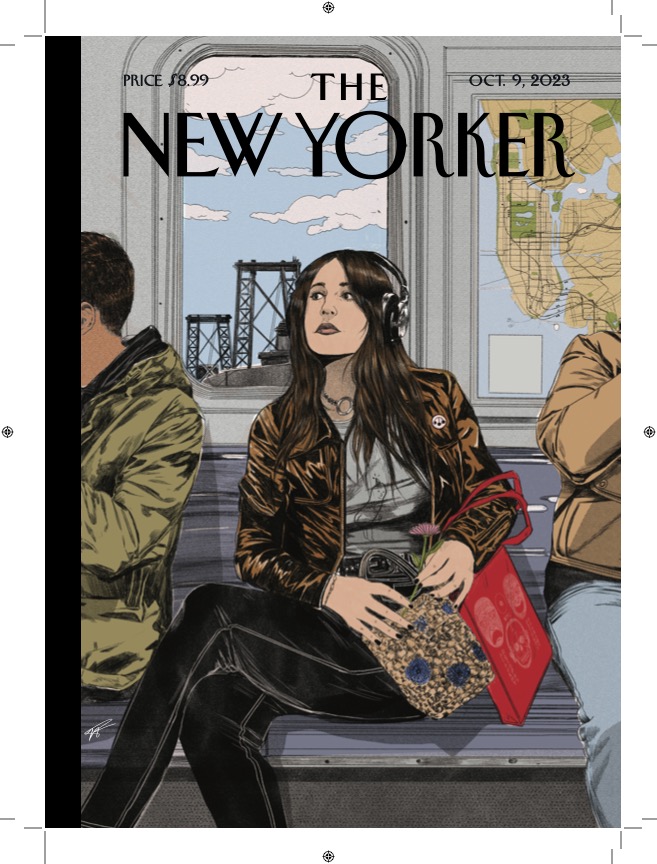This year marks The New Yorker’s 100th anniversary. We’re celebrating the milestone of this renowned New York neighbor by taking a look back at the many Pratt faculty, staff, and alumni who have contributed to—or been featured in—the magazine over the last century. Activities around the centennial abound, with a special issue of the magazine, a festive anniversary party, and major exhibitions at the New York Public Library, the Society of Illustrators, the New York Transit Museum, and L’Alliance New York.
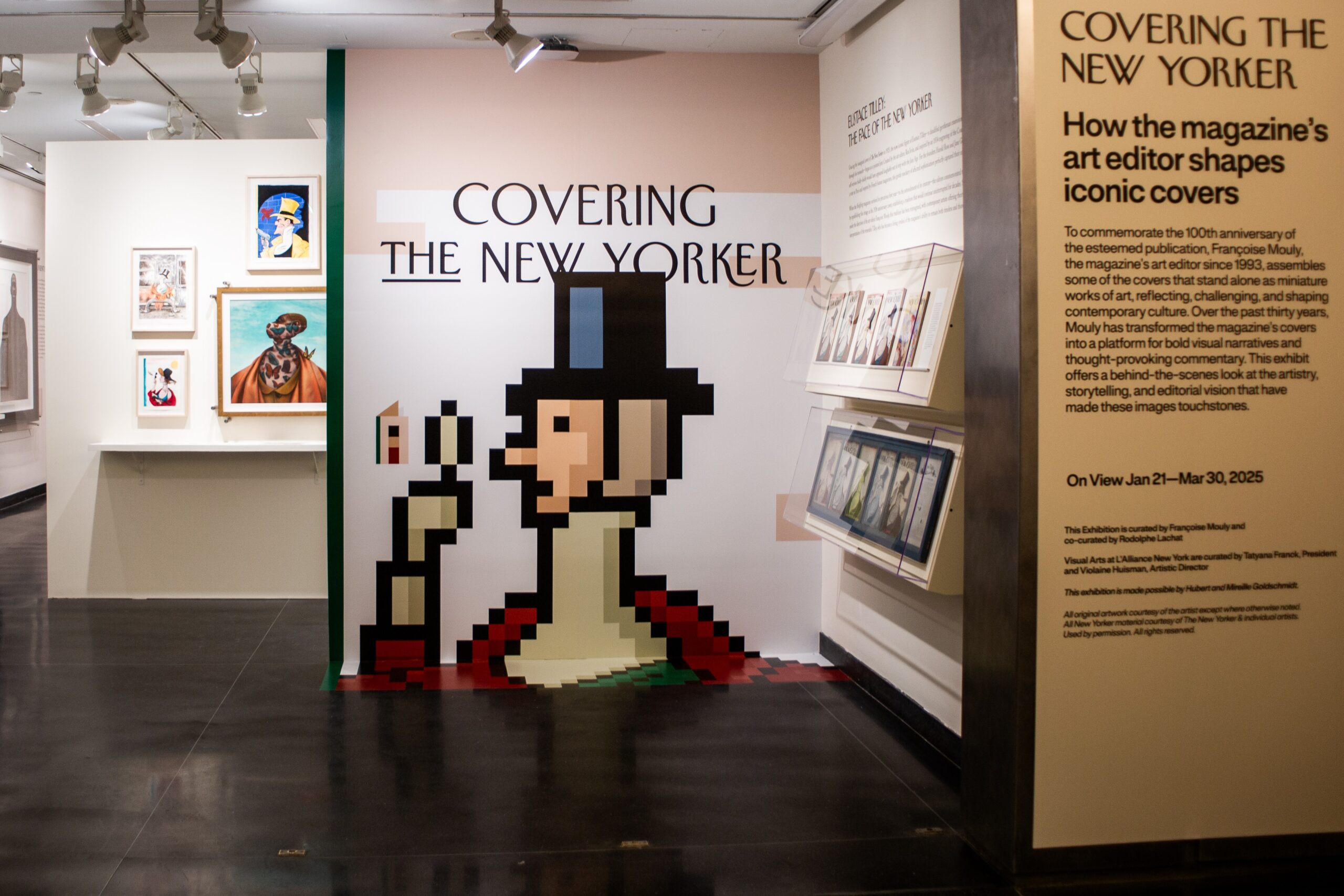
From cartoons to hard-hitting journalism, in-depth profiles and cover art, fiction, photography, and poetry, check out a few selections from the Pratt community below.
Cartoons and Illustrations
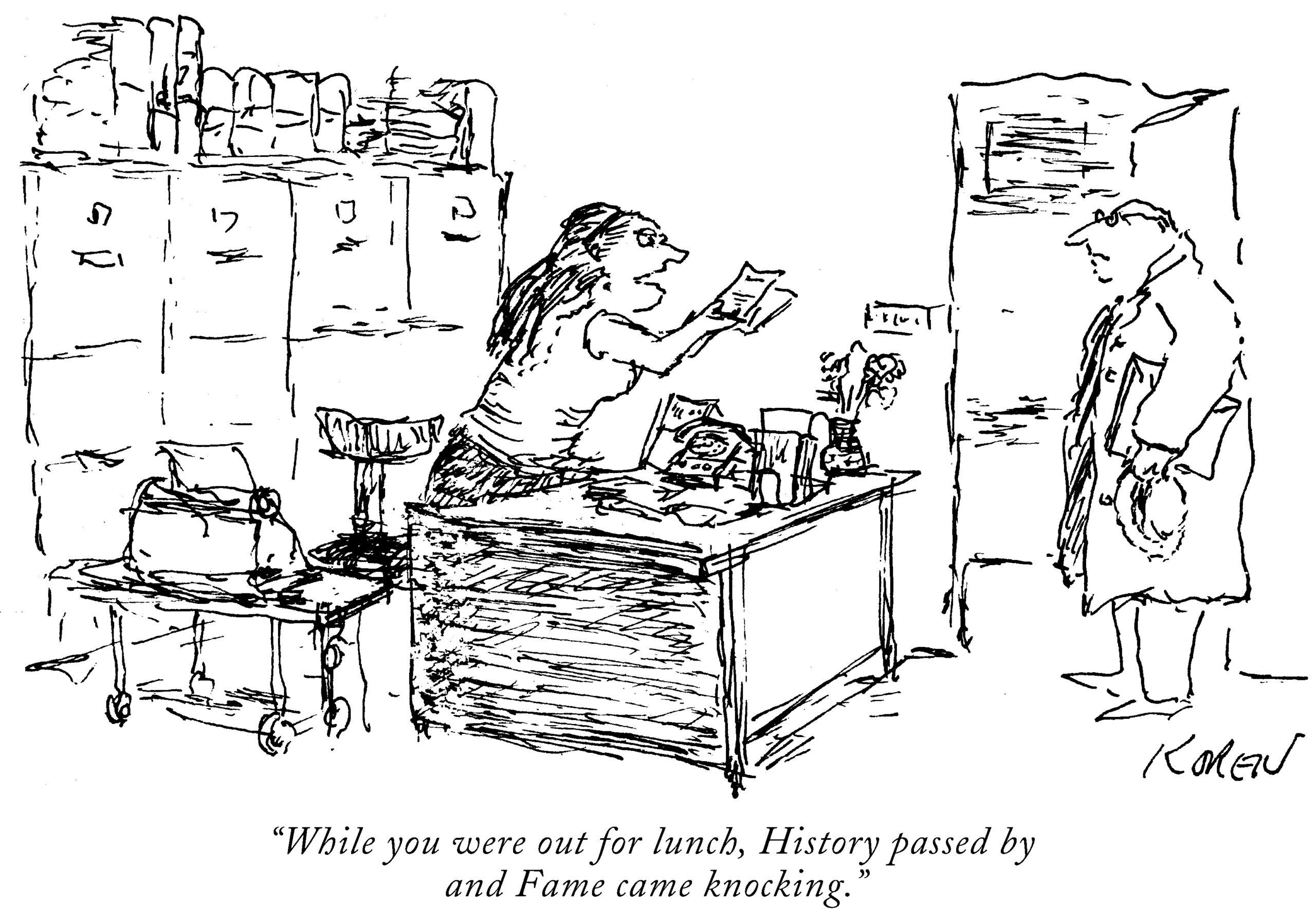
Jordan Awan, BFA Communications Design (Illustration) ’07, Former Illustration Faculty Member
Jordan Awan spent hours as a child “diligently studying his parents’ anthology of New Yorker cartoons,” writes Daphne Milner for It’s Nice That. The effort paid off. From 2010 to 2014, Awan served as art director for the magazine, helping to steer its impactful visual presentation. He also contributed many illustrations, as well as web icons for the online magazine.
Anjali Chandrashekar, BID ’15
One of the first South Asian cartoonists to be published in The New Yorker, Anjali Chandrashekar is a regular contributor to the magazine. Her work was also included among Instagram’s favorite New Yorker cartoons in 2023. Chandrashekar studied industrial design at Pratt and was recognized by Forbes’ 30 under 30.
Bob Eckstein, BFA Communications Design ’85
Alum and former professor Bob Eckstein is a regular contributor of timely political cartoons, charming illustrations, and more.
Jules Feiffer, Illustration (1947–1948) and Honorary Doctorate of Fine Arts ’81
Jules Feiffer’s distinctive illustrations appeared in The New Yorker, most recently in a Postscript following Feiffer’s death earlier this year. “The great thing about comics is that it’s words and pictures—that it’s a literary form and it’s a visual art form, that’s what makes it so exciting,” he said in a 2015 interview. “I love comics now that I’m back in it, as much or perhaps more than I ever did, and with more of a focus and a purpose than I did as a kid, obviously. And that love becomes my serious work, but also, as I do the serious work, I’m having the best time of my life. I can’t stop giggling.”
Kate Gavino, BFA Writing ’11
The writer-turned-illustrator combines her two mediums for the magazine’s famed Shouts & Murmurs section, with literary-inspired pieces like: “Are You Social-Distancing, or Are You Colin from ‘The Secret Garden’?”, “Valentines Written by Victor Hugo”, and “Early Signs That Your Infant May Be a Byronic Hero.”
Edward Koren, MFA ’64
Dubbed the “cheery philosopher of cartoons” by The New Yorker itself, Edward Koren was first published in the magazine in 1962, leaving behind a lasting legacy of levity and wit. Over the course of his life, he became a staple, producing over 1,000 cartoons and over 30 covers for the publication before he passed. His drawings of strange and memorable creatures were also reviewed in The New Yorker.
Lee Lorenz, BFA Communications Design (Illustration) ’54
Lee Lorenz was one of the quintessential cartoonists for the magazine, contributing countless cartoons and covers. In his obituary for The New York Times, Sam Roberts remarks that over Lorenz’s 40-year tenure he played a significant role in choosing the direction of the magazine by shaping who and what was given space in its pages.
Rose Wong, BFA Communications Design (Illustration) ’14
Rose Wong has designed various illustrated spots for The New Yorker, including for the “For You” quiz, which provides readers with personalized content recommendations; the Web Box, highlighting work on The New Yorker app; whimsical botanical accents throughout the magazine; and lead graphics for articles and puzzles.
Cover Artists
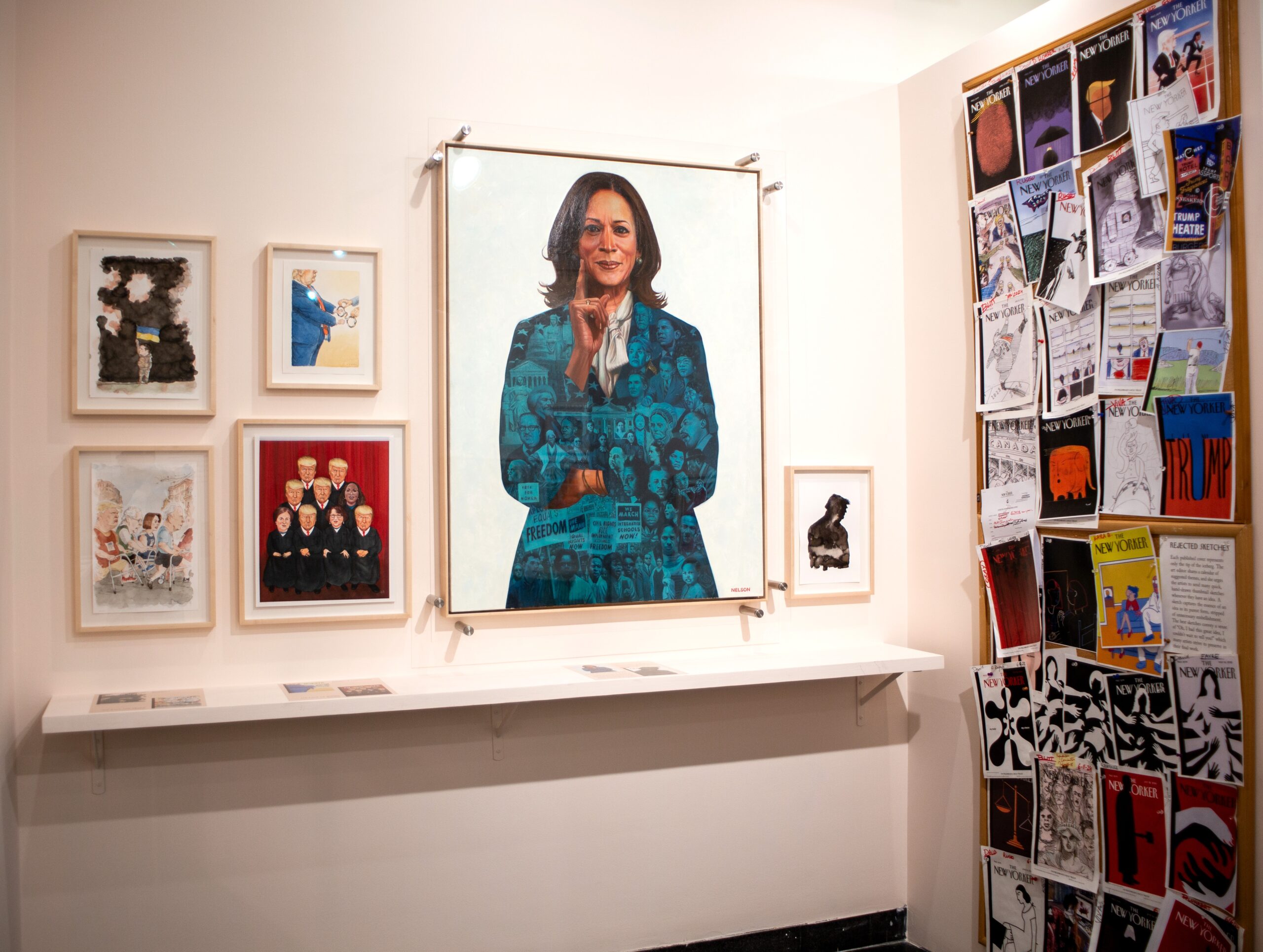
Daniel Clowes, BFA Communications Design (Illustration) ’83
“I don’t like to talk about my work—it’s best to let the image stand for itself,” Daniel Clowes told The New Yorker. Clowes is a beloved contributor of cover art and has been interviewed in the magazine about his graphic novels and his influences.
Kadir Nelson, BFA Communication Design (Illustration) ’96
Kadir Nelson is one of the most well-known artists for The New Yorker, with his paintings gracing the cover of many issues. His art addresses politics and social movements, as well as the everyday moments that make up life in New York City—from sitting on a stoop in Clinton Hill to grabbing an ice cream cone on Coney Island.
Nicole Rifkin, BFA Communications Design (Illustration) ’14
Since graduating from Pratt, artist and illustrator Nicole Rifkin has contributed cover art for four issues of The New Yorker in her distinct style. Her inaugural cover in 2021, titled “Pride and Joy,” in recognition of Pride month, depicts a moment of private self-expression. “In her first cover for the magazine, which drew inspiration from a photo of the writer Orion Carloto by Hanna La Salvia, Nicole Rifkin depicts a quieter moment, when self-presentation is freed from public perception,” writes Françoise Mouly.
On another cover, Rifkin included in her illustration a tote bag designed by fellow Pratt graduate Alexander Heir, BFA Fine Arts (Printmaking) ’06. “I bet you there are thousands of people on the subway every day who are going home or to the studio to create something that might change your life for the better,” she said of the subway-themed cover.
Edel Rodriguez, BFA Fine Arts (Painting) ’94, Former Faculty Member ’15–’19
Illustrator Edel Rodriguez took on the task of creating a moving cover for a January 2021 issue of The New Yorker, following the January 6 attack on the U.S. Capitol, which featured the American flag at half mast. “A part of America died on January 6th,” Rodriguez said. “The flag at half-mast marks that moment.” Rodriguez has also been profiled in the magazine’s pages.
Fiction and Articles
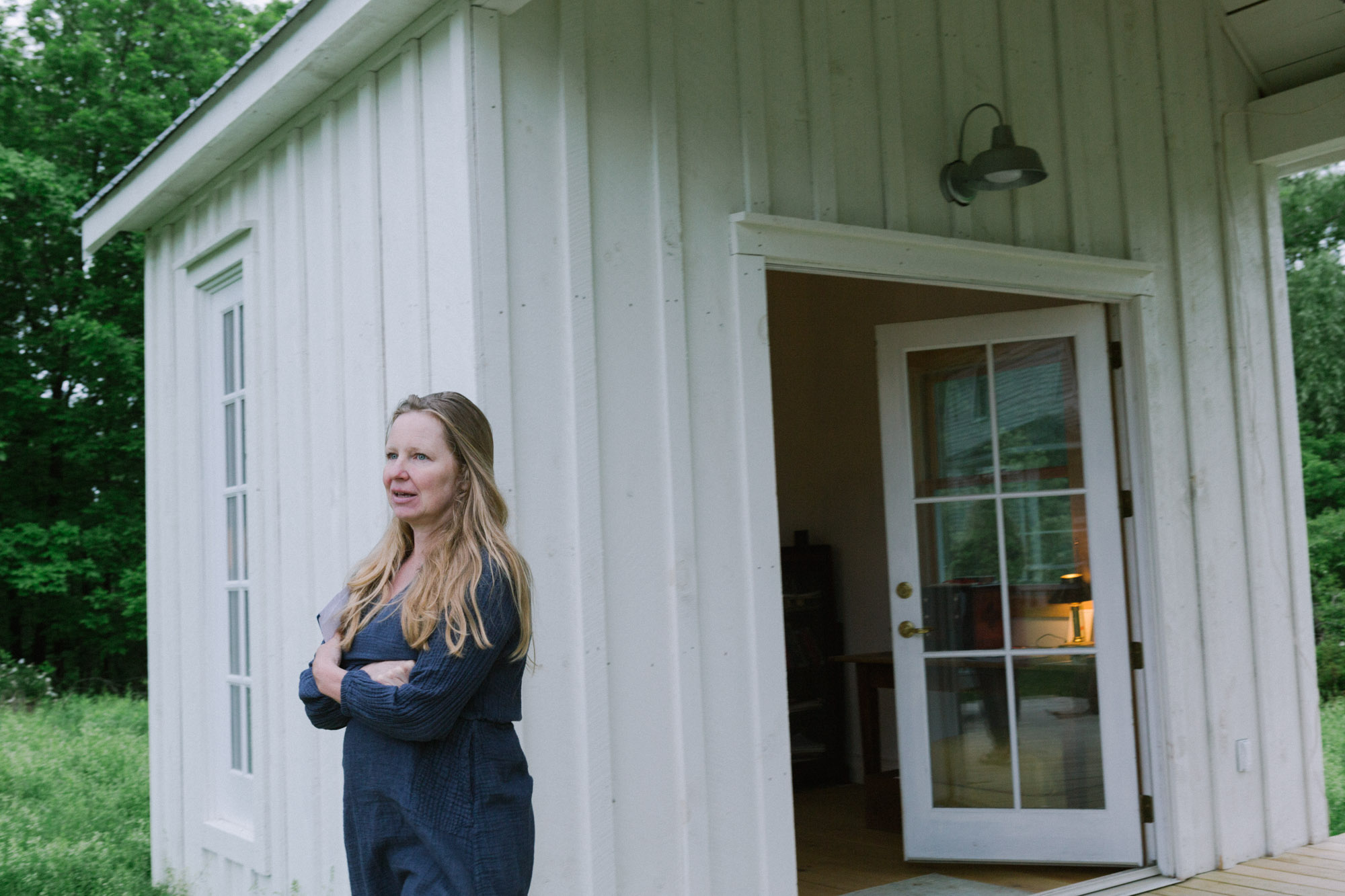
Samantha Hunt, Professor of Writing
Samantha Hunt has contributed both fiction and nonfiction to the legendary publication. In 2006, her short story “Three Days” was published, followed by “The Yellow,” “A Love Story,” and an essay about alcohol and shame, titled “Ghosts at the Liquor Store.” “The Yellow” was later turned into a film which screened at TIFF. Her work was also “briefly noted” in 2004, 2008, 2016, and 2017.
Eric Rosenblum, Adjunct Associate Professor – CCE of Writing
In 2022, Eric Rosenblum dove deep into author Katherine Dunn’s 1989 novel Geek Love with a review in the Page-Turner section of the magazine.
Justin Taylor, Former Visiting Assistant Professor of Writing
In 2012, while Justin Taylor was teaching in Pratt’s Writing Department, he published a piece of fiction called “After Ellen.” In conjunction with the publication, Taylor spoke to the magazine about the story. “I have to believe that everyone is capable of changing, but I don’t necessarily think it follows that all change is the result of self-awareness or direct engagement with one’s past,” he said. “Sometimes the world conspires to offer you opportunities you don’t necessarily deserve, or to make you better than you’d planned to become.”
Profiles, Features, and Reviews
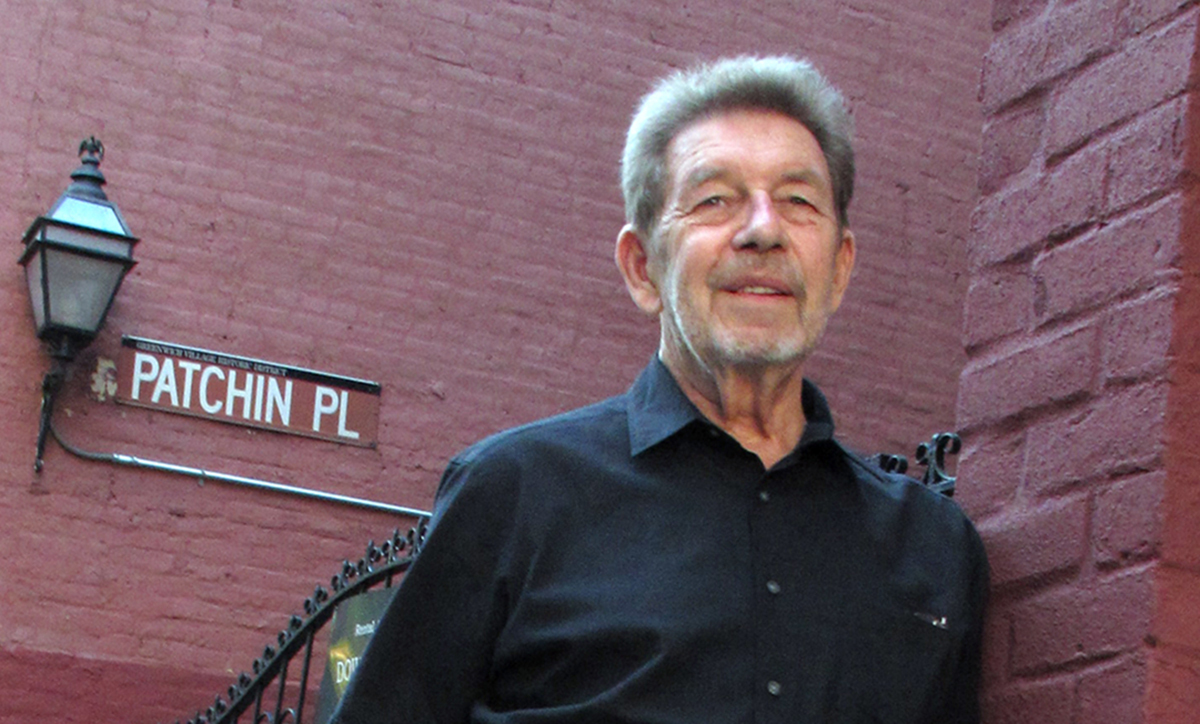
Anne Garner, MSLIS ’08
New York Public Library librarian Anne Garner was featured in an article on marginalia in books. “She majored in classics in college, worked in antiquities at The Metropolitan Museum, and spends her days with books dozens or hundreds of years old, and so is also on good terms with timelessness,” writes Ian Frazier.
Pete Hamill, Pratt Legend; School of Art Alumnus; Honorary Doctorate of Humane Letters ’80
Upon the passing of columnist and novelist Pete Hamill, Adam Gopnick wrote in The New Yorker, for a piece titled “Pete Hamill, Egalitarian Hero,” that Hamill was “one of the few living inheritors of a time when literary ambition and seriousness routinely intersected with tabloid energy and grit.” Tom Robbins also reflected on Hamill’s brief but impactful legacy as the editor of the New York Daily News.
Mariame Kaba, MSLIS ’22
Activist and organizer Mariame Kaba was profiled by Keeanga-Yamahtta Taylor in 2021—following the murder of George Floyd and the eruption of the Black Lives Matter protests—about her role in “the emerging movement for police and prison abolition.” “I am looking to abolish what I consider to be death-making institutions, which are policing, imprisonment, sentencing, and surveillance,” she told Taylor. “And what I want is to basically build up another world that is rooted in collective wellness, safety, and investment in the things that would actually bring those things about.” Kaba has also been interviewed for articles by Jia Tolentino and referenced in an article about Ibram X. Kendi.
Daniel Lopatin, MSLIS ’10
Daniel Lopatin, an experimental electronic music producer, composer, singer, and songwriter, was profiled in a September 2023 issue of The New Yorker. The in-depth profile looks at his “career writing elegiac, otherworldly electronic compositions using computers, synthesizers, and digital screens.”
Paul McDonough, Adjunct Associate Professor Emeritus of Photography
The accomplished photographer, who passed away this spring, made the New York City streets his subject. Writer, critic, and curator Hilton Als profiled McDonough’s work for the magazine in 2014, alongside imagery from his project “Sightseeing.” “Artists—the best ones—reinvent themselves by continually digging at the essence of the thing they mean to describe,” writes Als. “McDonough’s project, it seems to me, is a kind of record of his life as a walker in cities; his pictures are a map of experience, of his consciousness. He is a thinker who looks through the eye of his camera to distinguish truth from reality.”
Anne Carroll Moore, Alumnus of Pratt Library School 1896; Head of the Children’s Department of the Pratt Institute Library 1896–1906
“In 1896,” writes Jill Lepore, “Anne Carroll Moore was given the task of running the Children’s Library of the Pratt Institute, in Brooklyn, built at a time when the Brooklyn schools had a policy that ‘children below the third grade do not read well enough to profit from the use of library books.’ Moore toured settlement houses and kindergartens (also a new thing), and made a list of what she needed: tables and chairs sized for children; plants, especially ones with flowers; art work; and very good books. The kids lined up around the block.”
Moore, who became the highly influential head of the children’s division at the New York Public Library, was also featured in an article about Margaret Wise Brown, among other articles. In 1955, Moore was awarded a Doctor of Letters from Pratt Institute.
Carrie Moyer, BFA Fine Arts (Painting) ’85
Carrie Moyer appeared in a 2021 art review of her exhibition with her partner Sheila Pepe at the Museum of Arts and Design, Tabernacles for Trying Times. The exhibition “celebrates the formal vision and feminist politics of two abstract artists who share an interest in glitchy beauty, vibrant color, and craft-store materials—as well as a life,” writes Andrea K. Scott. “Moyer’s glitter-and-acrylic canvases—mandala-like translucencies that have earned justifiable comparisons to Helen Frankenthaler and Georgia O’Keeffe—look as rapturous as ever, at once aqueous and pyrotechnic.”
Sharifa Rhodes-Pitts, Assistant Professor of Writing
Sharifa Rhodes-Pitts has appeared in two articles for the magazine: one about artist Simone Leigh and another about filmmaker Kahlil Joseph. “In addition to being an author, Sharifa is a builder of bridges between emerging black artists;” writes Hilton Als, “she’s interested in the global black conversation.”
Mickalene Thomas, BFA Fine Arts ’00
Mickalene Thomas has often been featured in The New Yorker—for her photos, paintings, curation, and collages. In a 2011 article, Maria Lokke writes, “best known for her colorful, rhinestone-adorned paintings and pop-art, pinup-girl aesthetic, Thomas’s trademark style translates beautifully into her photographs inspired by the Nigerian film industry.”
Salman Toor, MFA Fine Arts (Painting and Drawing) ’09
Painter Salman Toor was profiled by Calvin Tomkins in a piece titled, “How Salman Toor Left the Old Masters Behind.” “Toor is one of those gifted souls who find drawing as natural and essential as talking,” Tomkins writes. “The return of figurative art and storytelling, which was picking up momentum in the nineteen-nineties, took a new direction with Toor’s unabashed, queer subjectivity and its basis in the history of Western art.”
Briefly Noted and Beyond
A number of faculty members have also been included in the Briefly Noted section: Professor of Writing James Hannaham was mentioned for his book Delicious Foods, interviewed about Kara Walker and Elevator Repair Service, and appeared as the “Talk of the Town.”
Adjunct Associate Professor – CCE of Writing Adrian Shirk was featured in this section, as was Adjunct Associate Professor – CCE of Writing Sofi Thanhauser. Visiting Instructor of Writing Hannah Assadi’s novel The Stars Are Not Yet Bells was also noted, and included on a list of recommended books for 2022.
Fine Arts Chair Jane South has been recognized for, among other highlights, her “gossamer-light and balanced…improvisatory apparatuses” in 2004, her “Rust Belt, heavy industry”-inspired paper sculptures in 2006, and her “sculptural follies” that appear to “celebrate and mourn the constructed wonders of the world” in 2009.
They and We Will Get into Trouble for This by Adjunct Associate Professor – CCE of Writing Anna Moschovakis was recommended by Ben Lerner in a roundup of “The Books We Loved in 2016.” Lerner highlights how “Moschovakis uses formal innovation as a way of imagining new modes of interconnection.” At Night All Blood Is Black, translated by Moschovakis, and Eleanor, or, The Rejection of the Progress of Love have also been mentioned in the magazine.
For Daily Shouts, Phoebe Robinson, BFA Writing ’06, accepts her imagined award in the category of “2020 was my year” with an impassioned acceptance speech, excerpted from her book of essays Please Don’t Sit on My Bed in Your Outside Clothes.
Do you know of additional Pratt contributors to The New Yorker? We’d love to hear from you at editorial@pratt.edu.
